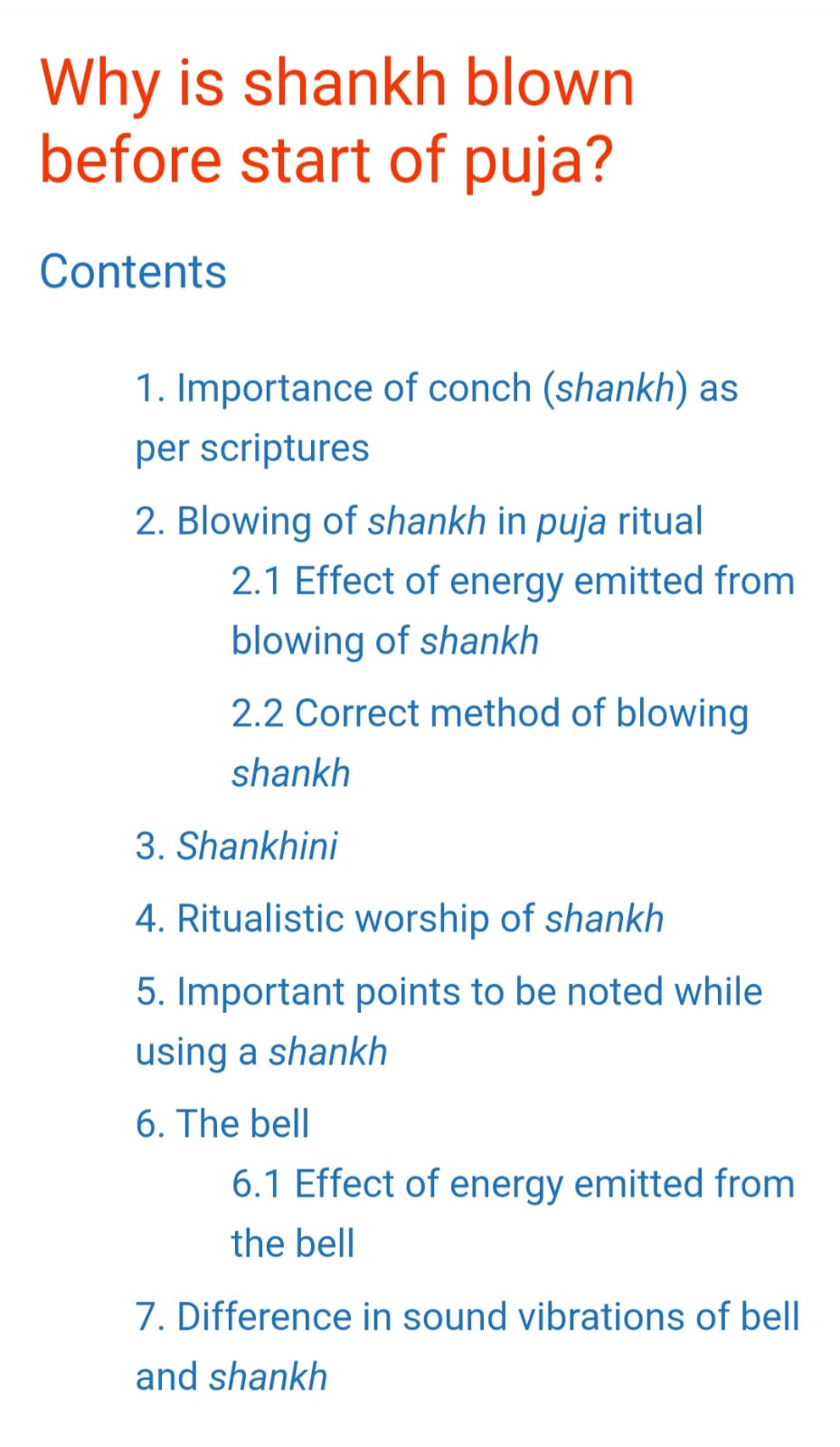![]()
The use of the GHANTA and SHANKH in Hindu Temples is rooted in both, spirituality’s symbolism and scientific insight. Together they create an environment that is physically and mentally conductive to devotion, aiding worshipers in connecting with the devine and promoting a harmonious state of being.
Ghanta (Temple Bell)
In Hindu temples, the ringing of a bell, known as a ghanta, holds significant spiritual and scientific meanings. Traditionally, it is believed that the sound produced by a ghanta helps to clear the mind, creating an environment conducive to focus and meditation. The ghanta is typically rung at the beginning of a puja (worship), and this ritual serves several purposes, both scientific and spiritual.
From a scientific perspective, the ghanta generates a sound that is considered highly auspicious and impactful on the human brain. When a bell is rung, it produces a sound that resonates at a frequency of around 200-600 Hz. These vibrations can affect the auditory nerves and stimulate certain parts of the brain, aiding in the creation of an immediate sense of calm. It is believed that the sound waves from the bell’s ringing synchronize with alpha waves in the brain, which are associated with relaxation and mental clarity. The specific metallic composition of the ghanta, typically consisting of copper, zinc, or bronze, enhances its ability to produce a clear, sustained tone that resonates in the temple space. This acoustic quality allows the sound to reverberate, helping to remove distractions and encouraging individuals to become more mindful and focused on their prayers or meditative practice.
In addition to influencing the mind, the sound of a ghanta has been shown to have a purifying effect on the surrounding environment. Sound waves at specific frequencies can affect water molecules in the air, reducing microbial activity and potentially promoting a cleaner atmosphere within the temple. The ghanta’s sound is also considered effective in creating positive vibrational energy, which is thought to be beneficial for both the temple and its visitors.
From a symbolic perspective, the ringing of the ghanta is a way to invite divine energy into the temple space and ask for blessings. In Hindu belief, sound is regarded as one of the most sacred elements and is seen as a way to communicate with the divine. The sound of the bell is thought to awaken one’s inner consciousness and make the individual more receptive to spiritual experiences. This is why bells are present at the entrances of most Hindu temples, symbolizing a transition from the mundane world into a sacred space. The ghanta, therefore, is a tool that merges science and spirituality, aiding individuals in preparing both mind and body to focus on devotion and transcendence.
Shankha (Conch Shell)
The shankha or conch shell is another essential item in Hindu temples, symbolizing purity, auspiciousness, and the power of sound. The use of the shankha dates back to ancient Indian texts and practices, where it is revered not only for its symbolic significance but also for its practical and scientific benefits. The blowing of the conch is believed to invoke spiritual energy, cleanse the environment, and prepare the devotee for worship.
From a scientific standpoint, the sound produced by the shankha has a distinct resonating frequency, usually ranging between 200 to 300 Hz. This specific frequency is thought to create vibrations that are beneficial to both the human body and the surrounding environment. Research in the field of cymatics, which studies how sound waves interact with matter, has shown that sound waves at certain frequencies can create orderly, harmonious patterns. When a shankha is blown, it generates sound waves that can produce similar effects, potentially harmonizing energy in the vicinity and impacting the body’s physiological processes. The resonating frequency of the conch sound is also believed to activate certain chakras or energy centers in the human body, helping individuals achieve a meditative state, clarity, and focus.
Moreover, the shankha is thought to have a cleansing effect on the environment, both spiritually and physically. The sound vibrations produced by the conch shell can help in dispersing negative energies and creating a positive ambiance. The conch’s vibrations are also believed to stimulate the parasympathetic nervous system, which can help to reduce stress and induce a calming effect on the mind and body. This is why the blowing of the shankha often precedes major rituals and ceremonies in Hindu temples, as it sets a serene atmosphere for worship and helps devotees center their focus.
Symbolically, the shankha holds deep significance in Hindu mythology. It is associated with Lord Vishnu, one of the principal deities of Hinduism, who is often depicted holding a shankha as a symbol of divine sound. According to Hindu beliefs, the sound of the shankha represents the cosmic “Om,” which is considered the primordial sound of creation. Blowing the shankha is therefore viewed as invoking divine presence, protection, and blessings. It is said to create a bridge between the earthly and the divine, allowing devotees to experience a sense of unity with the cosmos.

Read more : Above 👆
Reference: Hindu Jagran samiti








WOW! Very well explained ….
Thanks🙏